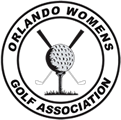Everyone was very attentive and polite at today’s meeting. I really appreciated that as I was only a substitute for our very own expert, Debbie Bizal.
A couple really good questions asked and Debbie has already responded. These answers are from Debbie.
1. What do you do if your ball is embedded in the side wall of a bunker ? Can you play that as an embed ball and if so what are your relief choices?
The USGA will be coming out with what to do with an embedded ball in the wall of a bunker. They have a answer but are waiting until the first of the year. I think they have several things that they are going to clarify with the new rules and that is one of them.
2. What is going to be used to identify a “no play area” and say, it’s a flower bed How would you know if it’s a free drop ?
It is up to the committee on how they will identify a no play zone. It should be different from how they identify a penalty area. This is the old environmental sensitive area. Sometime they mark with red stakes with green tops. A flower bed, young trees ect. can be listed on the notice to players or a local rule for the club. (A player must take relief from a no play zone)
3.In the bunker can you touch the sand on your back swing?
You still cannot touch the sand in the bunker with your back swing. Still a 2 stroke penalty. (See rule 12.2b). But now you can take a practice swing in a similar bunker. But still cannot take a practice swing in the bunker that your ball is in. But of course now you can remove loose impediments in the bunker. By definition sand and loose soil are not a loose impediments.
I knew this one ! 4. Is a fried egg in the bunker an embedded ball?
16.3 Embedded Ball a. When Relief Is Allowed
(1) Ball Must Be Embedded in General Area. Relief is allowed under Rule 16.3b only when a player’s ball is embedded in the general area.
There is no relief under this Rule if the ball is embedded anywhere except in the general area. (Remember the General Area covers all the course except: bunkers, the teeing area, the putting green or penalty areas.
- But if the ball is embedded on the putting green, the player may mark the spot of the ball and lift and clean the ball, repair the damage caused by the ball’s impact, and replace the ball on its original spot (see Rule 13.1c(2)).
Barb Matson

